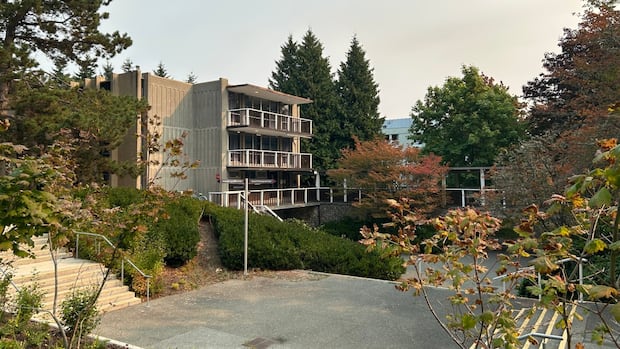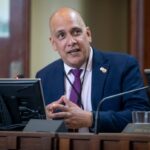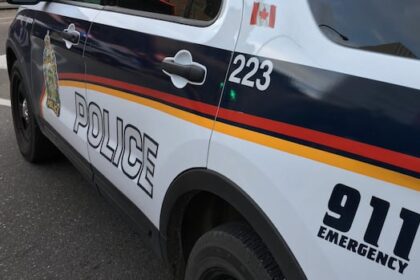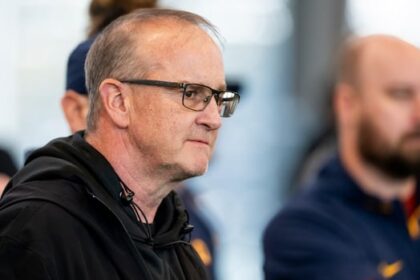British ColumbiaIn the wake of a student’s fatal overdose on campus, UVic received 18 recommendations from an independent report. It committed to implementing most of them before the fall term, but only three have been fully completed. Students, however, are optimistic the work will continue.Independent report was ‘awakening’ for change on campus, student leader saysEmily Fagan · CBC News · Posted: Sep 25, 2025 8:00 AM EDT | Last Updated: 6 hours agoThe student residence building at the University of Victoria where 18-year-old Sidney McIntyre-Starko fatally overdosed in January 2023. (Emily Fagan/CBC)When an independent report released in April detailed the “choices and mistakes” by the University of Victoria that led to a student’s fatal overdose on campus, university president Kevin Hall committed to making all the changes advised by the report’s author, former Abbotsford police chief Bob Rich. “We will implement all 18 recommendations,” Hall said.”Most of the recommendations from Mr. Rich’s report, we hope to have implemented before September.”By September, Hall was gone, having resigned to work at another university. And while UVic officials say many of the recommendations outlined in Rich’s report are in progress, few were completed by the start of the new term according to details provided by the university.When asked, officials pointed to only three recommendations that had been completed.One reason for this, according to Jennifer White, special advisor to UVic’s executive council on its substance use health strategy, is due to the outpouring of guidelines the university has received. The coroner’s inquest into the death of Sidney McIntyre-Starko, who fatally overdosed in a UVic residence in 2023, addressed two of its recommendations to the university in May. They are focused around mandatory training on overdose response and awareness. UVic held a student assembly in the spring, which crafted 15 core and 4 supplementary recommendations for changes on campus. It also surveyed faculty and staff, White said.A campus security vehicle drives through the residences on the campus of the University of Victoria (Emily Fagan/CBC)”It wasn’t feasible for us to just run after 100 different recommendations like a check-box exercise,” White said.Instead, she said the university looked for where recommendations overlapped, and “synthesized and consolidated” them into UVic’s Substance Use Health Strategy.”Even though the language might not be exactly [as] precise as how they were expressed in the original documents, the spirit of those recommendations are what’s guiding us,” White said.Michael Caryk, the UVic Student Society (UVSS) campaigns director, says that among students, there’s continued mistrust of the university and more could be done to repair the fractured relationship.”We always feel like the university can be doing more for students, and we always feel like we can be doing more,” he said.Progress underwayBefore these recommendations, UVic had begun to make changes on campus, including installing nasal naloxone kits on every floor of student residence buildings and creating a new system of easily identifiable numbered buildings for first responders.Kyla Turner, the executive director of UVic’s Graduate Students’ Society, feels it shouldn’t have taken McIntyre-Starko’s death to compel change at UVic. However, she’s grateful for the recent changes.”The day that the Rich report came out, I think most of campus had a good little cry,” she said. “It has been a real awakening for the university.”Each floor of UVic student residences now has new signage and naloxone. (Emily Fagan/CBC)There are now automated external defibrillators (AEDs) and naloxone kits in the lobbies of buildings across campus. Orientation materials for students provide information on substance use, signs of an overdose and how to access naloxone training. Signs advise students to “call 911, then Campus Security” in the event of an emergency. The UVSS hosts naloxone training twice a month with the help of UVic, and the student society now offers drug testing through its harm reduction centre.White said three of the 18 recommendations have been completed. These include dedicated mental health resources for residence life staff, the establishment of an administrative team and process to recognize issues and manage risk for students and creating an amnesty policy around drug use and possession.A building operated by the Graduate Students’ Society at the University of Victoria. (Emily Fagan/CBC)Calls for greater awareness, actionUVic became the first university in B.C. to adopt “good samaritan” principles, modelled after the federal Good Samaritan Drug Overdose Act, and removed the use or possession of illicit drugs from its non-academic misconduct policy this summer. But Turner and Griffin Foster, UVSS director of outreach and university relations, say awareness is very limited on campus.”I think we’d all like to see a bit more in the way of communication,” said Foster.”We know that efforts are being made… that has not come through loud enough for us to hear about it.”White says the university hopes to improve awareness in the coming months.”Our work this year is to make sure that the policy is well understood, because it’s only as good as how well we advertise,” she said.Many of the report’s recommendations focus on executive-level and crisis management reforms – most of which, White says, involve a level of coordination and protocols that require more time to complete. These include a strategy to change culture and address the needs of students, a crisis response policy, and training family liaisons to be available as needed.In campus buildings across the University of Victoria, new signs tell students who to contact in case of an emergency—first 911, then campus security. (Emily Fagan/CBC)There’s more student representatives want to see from UVic, including the distribution of naloxone, funding for faculty naloxone training, on-campus drug testing, work to reduce stigma around drug use and more support for peer harm-reduction education efforts.Training recommended by the coroner’s inquest, while available, is not mandatory, and UVic did not have a staff member with naloxone and training to administer it at Campus Kickoff festivities, White said. Jaime Arredondo Sanchez Lira, a UVic assistant professor and Canada Research Chair on Substance Use, participated in the student assembly held in the spring. He feels it should happen again, annually, so students can hold the university to account on its commitments.”We sit down, regularly, and see how the progress has been made or not made,” he said.”And then students can feel empowered to request things that are needed.”ABOUT THE AUTHOREmily Fagan is a journalist based in Victoria, B.C. She was previously a staff reporter for the Toronto Star. Her work has also appeared in publications including the Globe and Mail, Vice, and the Washington Post. You can send her tips at emily.fagan@cbc.ca.With files from Sean Robinson
UVic behind in implementing most of 18 recommendations from student’s death by new term











